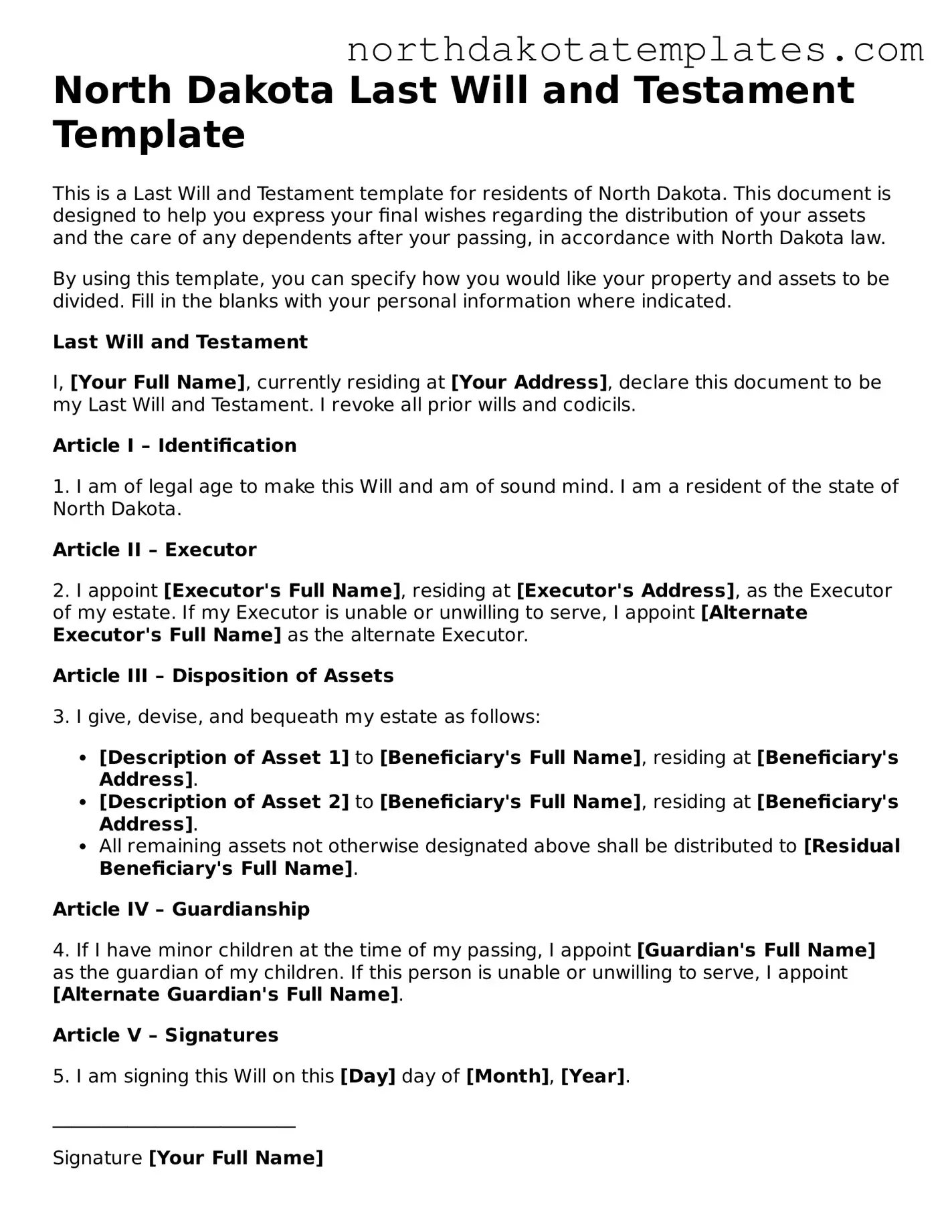North Dakota Last Will and Testament Template
This is a Last Will and Testament template for residents of North Dakota. This document is designed to help you express your final wishes regarding the distribution of your assets and the care of any dependents after your passing, in accordance with North Dakota law.
By using this template, you can specify how you would like your property and assets to be divided. Fill in the blanks with your personal information where indicated.
Last Will and Testament
I, [Your Full Name], currently residing at [Your Address], declare this document to be my Last Will and Testament. I revoke all prior wills and codicils.
Article I – Identification
1. I am of legal age to make this Will and am of sound mind. I am a resident of the state of North Dakota.
Article II – Executor
2. I appoint [Executor's Full Name], residing at [Executor's Address], as the Executor of my estate. If my Executor is unable or unwilling to serve, I appoint [Alternate Executor's Full Name] as the alternate Executor.
Article III – Disposition of Assets
3. I give, devise, and bequeath my estate as follows:
- [Description of Asset 1] to [Beneficiary's Full Name], residing at [Beneficiary's Address].
- [Description of Asset 2] to [Beneficiary's Full Name], residing at [Beneficiary's Address].
- All remaining assets not otherwise designated above shall be distributed to [Residual Beneficiary's Full Name].
Article IV – Guardianship
4. If I have minor children at the time of my passing, I appoint [Guardian's Full Name] as the guardian of my children. If this person is unable or unwilling to serve, I appoint [Alternate Guardian's Full Name].
Article V – Signatures
5. I am signing this Will on this [Day] day of [Month], [Year].
__________________________
Signature [Your Full Name]
Witnesses
We, the undersigned, do hereby certify that on the day and date above written, [Your Full Name] signed this Last Will and Testament in our presence and declared it to be their Last Will. We, at the request of the Testator, and in their presence, hereunto subscribe our names as witnesses.
__________________________
Signature [Witness 1's Full Name]
__________________________
Signature [Witness 2's Full Name]
This document should be stored in a safe place and updated as necessary to reflect any changes in your circumstances or wishes.
